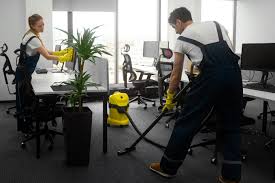Planning to have home extensions? Aside from the said addition, you can choose the main material that will make your place look bigger. Nowadays, there are many home extension styles you can do to improve your home.
Aside from having a bigger house, having home extensions can also increase the value of your property.
When it comes to planning your home extension, you can have it as a seamless addition. It means you can make the extension look as if it’s a part of the main house. On the other hand, you can opt for an extension that has a different style than the main house.
So if you want the latter, you can choose a different material. The most popular options are bricks, glass, blocks, wood, and copper. But if you’re having a hard time picking the best choice, then you should check this article for more information.
1. Bricks
Bricks have been one of the go-to materials when it comes to construction. Moreover, it’s cheaper and lighter than other materials such as stone.
If you have no problem or no required materials to use in your extension, then it’s better to use bricks. You can design different angles to make the extension bigger. One example that you can do is to make the ceiling higher.
Another good thing about bricks is that they can last long, and a lot of homey houses have a least one wall with them. Have you already seen a house with a fireplace made of bricks? If you do, your neighbourhood might have a lot of houses that have the same thing.
2. Glass
Want to have a modern-style home extension? Try choosing glass as the main material. It can easily transform your home into a homey yet spacious vibe.
Since it’s commonly used, you can easily find it on sale or even cheaper than some other materials. In addition, it can also create a good transition if your main house is made of bricks or blocks.
One thing you should consider when you settle for glass home extensions is the design. When crafting the design, you should take into consideration that glass might break so the design should be not too complicated.

3. Blocks
If you’re eyeing to have an aesthetic that looks rustic or unfinished, you can easily achieve it with concrete blocks. Aside from that, it’s also cheaper and more manageable compared to other materials.
Meanwhile, you can still have walls made of blocks even if you’re planning to have a sophisticated outcome. Just finish the walls with good paint, and people will never notice that it’s made of blocks.
Another reason why you should pick concrete blocks is that they have been used to form houses for many years. Even if time passes by, houses made of concrete blocks can survive a lot of trials.
4. Stone
Have you ever seen a house made of stone? Doesn’t it look too sturdy? Years before the other kinds of materials were created, stone has been the go-to construction material in making houses and home extensions. Furthermore, until now, the stone is still one of the most trusted materials for home walls.
Aside from being popular and long-lasting, the stone is also eco-friendly and low- maintenance. Moreover, it’s a good addition as an interior decoration as it can give an elegant finish.
On the other hand, if you don’t like the idea of stone-finished walls, you can just use it as the foundation of the wall, and use a different material for the outer part.

5. Wood
If you’ve been dreaming of having a wood home extension, then it’s time to make it come true. You might think having home extensions made of wood is expensive, but as it’s just easy to install, you can save more money from the builder’s fee.
Similar to glass, wood can also add a good transition from your main house to the extension. Moreover, it can give a great finish based on your target design.
A unique thing about wood is that it can adjust based on what you want because you can shape it differently. Meanwhile, other available materials already have shapes or are even hard to manipulate.
6. Copper
If you think this shiny and luxurious-looking material can only be used in building roofs, you might also want to consider it for your wall.
Copper is also a good choice if you want a contemporary or historical finish. Since it already has a colour, you can save money from buying paint. And although it’s not widely used for home extensions, it’s also a good pick because it’s sturdy.
Furthermore, copper wall cladding material is also low-maintenance because it’s corrosion-resistant and doesn’t attract rust compared to steel.
As you may already know, you can still have home extensions with the combination of the abovementioned materials. However, if you want to focus on one main material, you should pick the one that best suits your needs. Let us know which one is your best bet for your home extension commenting below!












Add Comment